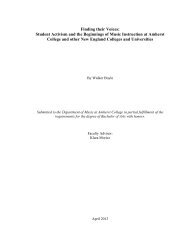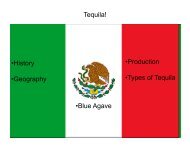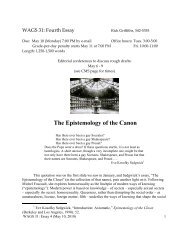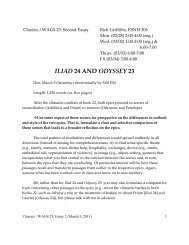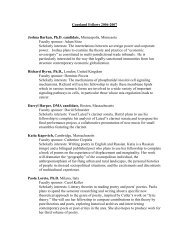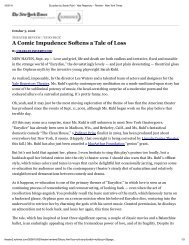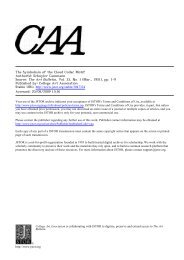Juma, Mary-Ann--Thesis
Juma, Mary-Ann--Thesis
Juma, Mary-Ann--Thesis
You also want an ePaper? Increase the reach of your titles
YUMPU automatically turns print PDFs into web optimized ePapers that Google loves.
FDI is generally believed to be more stable and beneficial than capital inflows<br />
such as direct portfolio investment and cross-border bank lending. Lipsey (1999)<br />
confirms that foreign direct investment is less susceptible to reversals than portfolio<br />
investment, making it a more reliable source of capital inflows to developing countries.<br />
Furthermore, the International Monetary Fund’s official definition of FDI as “investment<br />
made to acquire a lasting interest in or effective control over an enterprise operating<br />
outside of the economy of the investor [emphasis added]” explicitly reflects this long-<br />
term quality. Because of its perceived stability, FDI is considered to be in a better<br />
position to contribute meaningfully to host country growth.<br />
Beyond direct capital formation, FDI can exert an effect on economic growth<br />
through the technological/knowledge spillovers channel. FDI’s projected role as a<br />
diffuser of technology or knowledge implies that it can have a direct effect on growth<br />
(Borensztein et al 1998), especially within the framework of endogenous growth theory,<br />
which emphasizes the accumulation of knowledge as the driver of long-run economic<br />
growth. Kinoshita (1999) explains that the technology diffusion process can take on any<br />
of four different forms: the imitation effect, the training effect, the linkages effect, and<br />
the competition effect. As firms from developed countries set up subsidiaries or factories<br />
in developing countries, these firms might introduce more efficient/advanced<br />
technologies to local markets. Through contact in the marketplace, local producers might<br />
copy the advanced technologies and practices that are implemented by their foreign-<br />
owned counterparts, causing increased production through the use of more efficient<br />
technology. This diffusion mechanism is called the imitation effect.<br />
16



